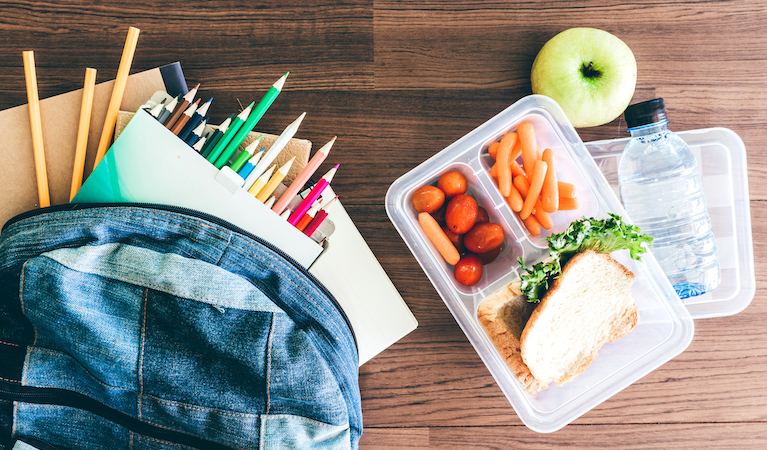Back to School is approaching, and one of the many things you need to consider is school lunches. Is your child going to have lunch provided by the school? And if so, do you need to pay for it, and how much will it cost? And if not, how can you save money by providing them with a healthy lunch that doesn’t break the bank?
In this article we take a look at:
- Who is eligible for free school lunches?
- How much does a school lunch cost and what food is offered?
- Ideas for making your own school lunches that won’t break the bank.
Who is eligible for free school lunches?
Free school meals are available in England for all children in government-funded infant schools, covering Reception, Year 1 and Year 2. As your child moves into junior school – Year 3 – school meals need to be paid for unless your child is eligible for free school meals.
Over 2 million pupils were eligible for free school meals in England in the 2022/23 academic year, which is 23.8% of all pupils. Your child may be able to get free school meals if you are on any of the following benefits:
- Universal Credit – with a household income (excluding benefits) of less than £7,400 a year after tax
- Income Support
- Income-based Jobseeker’s Allowance
- Income-related Employment and Support Allowance
- Support under Part VI of the Immigration and Asylum Act 1999
- Pension Credit
- Child Tax Credit
- Working Tax Credit
If your child is eligible for free school meals, they will also qualify for the Holiday Activity and Food Programme. Additionally, depending on your local council, food vouchers may be available through the Household Support Fund.
How much does a school lunch cost and what food is offered?
If you are not eligible for free school meals, you will either need to pay for a school lunch or provide food for your child to take to school.
School lunches cost on average around £2.40 a day. If your child has lunch every day, this adds up to around £50 a month and £450 a year.
For the money you pay, your child will get a lunch that has to meet certain standards. School food standards are set by the government to ensure that children have healthy, balanced diets. Every day, a school lunch must include:
- one or more portions of fruit and vegetables;
- one or more portions of starchy food, such as bread or pasta;
- a portion of food containing milk or dairy.
Additionally, lunches must include a portion of meat or poultry on 3 or more days each week and oily fish once or more every 3 weeks.
If your child is having a substantial meal at school at lunchtimes, this could help you to save money on their evening meal. But if they tend to rush or skimp on their lunch at school, perhaps because they want to do other things instead, you may be better to send them to school with a packed lunch and give them their main meal in the evening.
So let’s look at some ideas for what to put in those packed lunches.
Ideas for making your own school lunches that won’t break the bank
Here are five ideas for items to put in your child’s lunchbox that will be healthy and nutritious but can also help you to save money on the cost of school lunch.
Sandwiches are always popular, and the good news is that you can vary the fillings and save money by using up leftovers from the day before. Some ideas for cost-effective sandwiches are:
- Tuna and mayonnaise
- Cheese and salad or cucumber
- Corned beef and pickle
- Ham and coleslaw
- Banana and honey
- Jam and cream cheese
- Hummus with tomato
If your child begins to get bored with them, it can often help if you make them together the night before. Perhaps even have a go at double decker sandwiches with two different fillings to make a bit of a change.
Even if your child is initially not keen on the idea of salad, it’s a great way to use up leftovers. For example, if you have something like chicken, sausage, pie or quiche from the day before, you can put this in their lunchbox with a bit of salad to go with it.
Pasta salad also works well. You could either use the remains of last night’s pasta dish or mix a little bit of cooked pasta with items like tuna, ham, tomato, sweetcorn, cheese, spring onion and plenty of mayonnaise to make a tasty and nutritious lunch.
Vegetable kebabs or crudités
A great way to use up spare vegetables in your child’s lunchbox is to make either vegetable kebabs or crudités.
For vegetable kebabs, just push a few vegetable or salad items onto a small wooden skewer. For a cooked vegetable kebab you could use things like mushrooms, courgettes, peppers and shallots, whereas a salad kebab could contain a cherry tomato, cucumber, pepper, carrot, celery, spring onion.
For crudités, simply slice up a variety of crunchy vegetables such as carrots, peppers, cucumber, and celery. You can then add a small pot of hummus which you can buy in multipacks from most supermarkets. But remember that the main aim of including vegetable kebabs or crudités in the lunch box is to use up what you already have and save money in the process.
This is where you need to be careful, because not only is it very easy to give children too much sugar in their lunchbox, but also sweet treats can be very expensive. So instead of snacks and puddings like crisps and chocolate think about trying some of the following:
- Small pot of yoghurt or fromage frais
- A fruit kebab
- Dried fruit
- Cheese and crackers or mini bread sticks
- Small homemade muffin or cupcake
- Homemade cheese straws or parmesan crisps
Last but not least, beware of spending too much money on sugary drinks. Even just a small carton of juice in a lunchbox can really bump up the cost. A healthier option, which will also save money, is a bottle of either plain water, weak cordial or squash. Either of these will keep your child hydrated without filling them with sugar.
Take a peak at an earlier article for information on how to save money on food shopping.
We hope that this article has given you some useful ideas about how to handle your child’s school lunch in the new school year, and save money in the process..
Check back here with us soon for more lifestyle tips from Loans 2 Go.


 Now is the time to start planning your financial goals for 2026
Now is the time to start planning your financial goals for 2026 
















